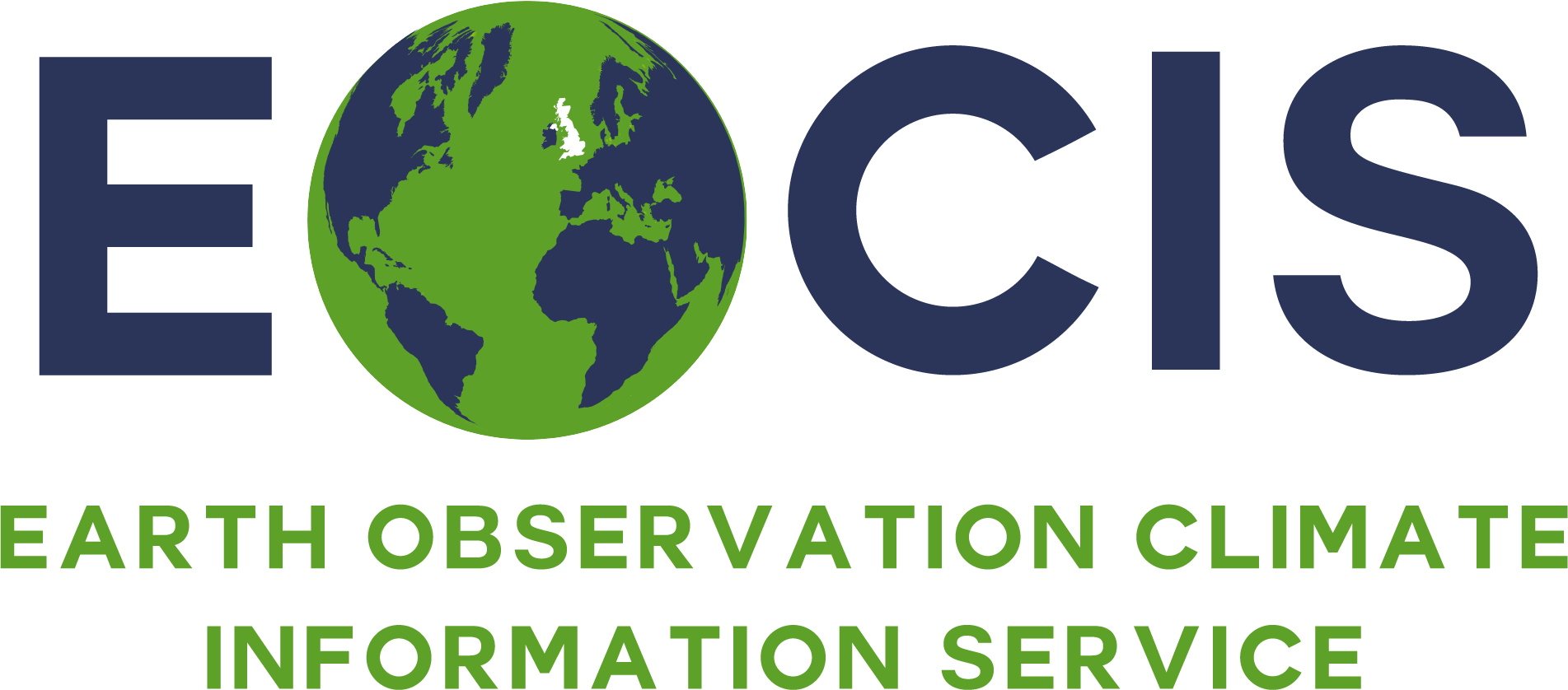Improved warnings for agricultural drought in Kenya
By Dr Ross Maidment, Dr Lauren James (TAMSAT Group, University of Reading) and Japheth Migiro (Kenya Meteorological Department)
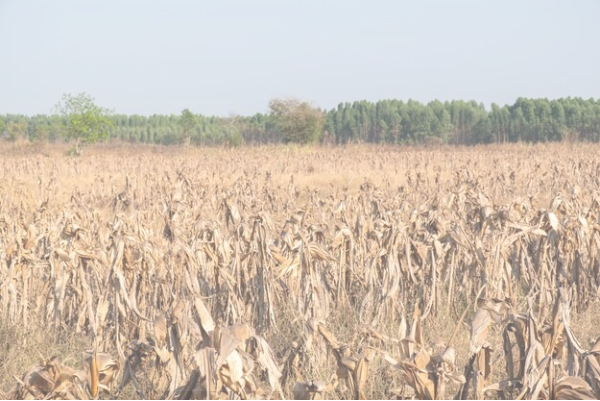
Drought is a recurring phenomenon in Kenya, often leading to significant impacts such as limited or no access to food and loss of livestock. For example, by Spring 2023, Kenya (and the wider East Africa region), was facing its sixth consecutive rainy season with poor rains, pushing millions of Kenyans into food poverty. Compounding the situation, in recent years, periods of drought have often been followed by floods, creating a cycle of disasters that deepen poverty and trap the poorest farmers in a relentless struggle for survival. As such, better identification and prediction of agricultural drought is essential to help mitigate the impacts of drought by providing early warnings of potential crop and livestock losses. This blog highlights the development of a new agricultural drought monitoring and early warning system for Kenya – a collaboration between the Kenya Meteorological Department (KMD) and the University of Reading’s TAMSAT Group (https://www.tamsat.org.uk).
Exploiting recent developments in soil moisture estimation
The collaboration between KMD and TAMSAT was motivated by the development of TAMSAT’s new Africa-wide satellite-based soil moisture dataset – a variable which provides a direct indicator of agricultural drought (i.e. low soil moisture during the growing season). This new dataset, accessible from the TAMSAT website, provides estimates of root zone soil moisture (down to 1 m) which is not possible by current satellite technologies that can only infer soil water content in the top 5-10 cm of soil. The TAMSAT soil moisture dataset does this by utilising a land surface model to simulate soil moisture at different soil depths, by taking into account daily meteorological conditions (e.g. rainfall, air temperature, wind speed) as well as information on soil type.
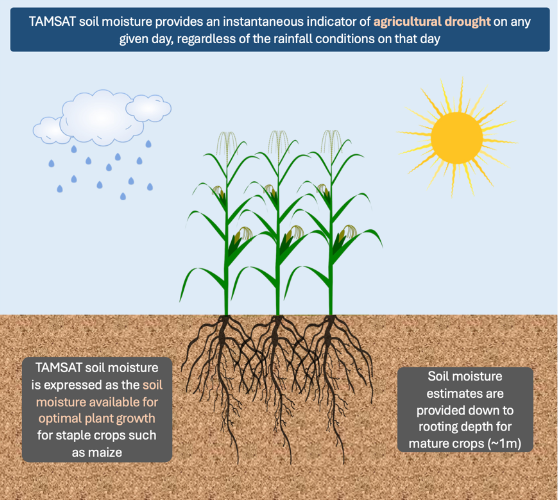
The new dataset has been back dated to January 1983 and is updated with a latency of around one week, ensuring new information is readily available to rapidly assess agricultural drought conditions. The image below provides an example of the Africa-wide TAMSAT soil moisture product for May 2024.
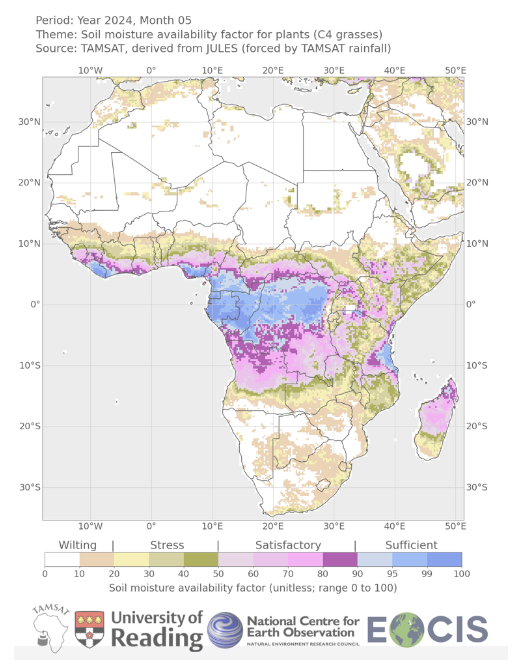
What is being developed?
As part of Kenya’s Ministry of Environment and Forestry, KMD are mandated to provide timely and reliable information on drought to its citizens. Currently, this is done through regular agrometeorological bulletins based on readings from KMD’s observational network across Kenya. However, these in-situ measurements are sparse and only represent a limited fraction of the country, with large areas of Kenya not observed. This is where the full spatial coverage of the TAMSAT soil moisture dataset can add value and support KMD’s existing monitoring of agricultural drought.
Through this collaboration, KMD and TAMSAT have been co-designing and piloting a new tool that exploits TAMSAT’s new soil moisture dataset to provide robust and timely agricultural drought information that is tailored to Kenya’s growing seasons. This information, such as the map given below, can provide timely warnings of the onset, severity and evolution of below-average soil moisture, and hence agricultural drought. Such information can be used in conjunction with KMD’s existing in-situ observations to provide a comprehensive overview of drought status across Kenya and early warning of potential crop losses and famine. Moreover, the use of TAMSAT’s long-term soil moisture record (+40 years) is particularly advantageous as it allows KMD to contextualise the current growing season with respect to historical years.
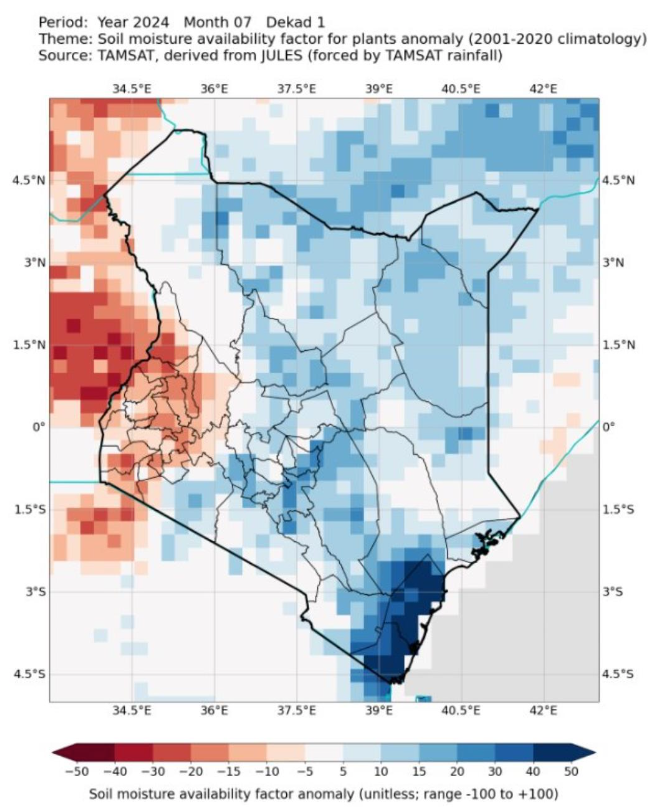
The tool is also integrating soil moisture forecasts from the existing TAMSAT-ALERT system (https://research.reading.ac.uk/tamsat/impact_tamsat_alert/) to provide forecasts of agricultural drought out to the end of the growing season. Furthermore, we are now exploiting 6-week precipitation forecasts from the European Centre for Medium-Range Weather Forecasts (ECMWF) that are now available every few days, to increase the skill of the TAMSAT-ALERT forecasts, ensuring that the drought predictions align with ECMWF’s meteorological forecasts. Combined, this new, customised drought tool offers near-real-time monitoring and end-of-season forecasting of soil moisture over Kenya, enabling better decision-making when drought occurs.
What next?
In early 2025, the TAMSAT Group will travel to Nairobi to deliver a capacity building workshop to enable KMD staff to implement and operationalise the new drought monitoring tool ahead of Kenya’s long-rains season, which typically begins in March. Given its applicability to other regions in Africa, the tool has garnered growing interest from other national meteorological and hydrological services, as well as stakeholders in the financial sector, where it holds significant potential for developing insurance products targeting smallholder farmers. The TAMSAT Group plans to support these stakeholders in integrating the drought tool into their existing applications and welcomes inquiries from other interested parties (TAMSAT contact: tamsat@reading.ac.uk).
The project has been jointly supported by the UK Earth Observation Climate Information Service (EOCIS), a Natural Environment Research Council (NERC) Knowledge Exchange Fellowship – Drought Risk Information for the African Finance Sector (DRIAFS; NE/Y005058/1) and the National Centre for Atmospheric Science through the NERC National Capability International Programmes Award (NC/X006263/1).
